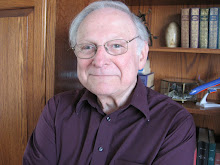If you happen to be playing bridge after the Kentucky Derby, while eating a sandwich, wearing your new cardigan underneath your chesterfield, and idly admiring an orrery, when you are suddenly dealt a yarborough—then you are making use of six eponyms derived from British earldoms. As if you didn’t already know, an eponym (from the Greek epi meaning “attached to” and onyma meaning “name”) is a person for whom something is named.
Six British earls gave their names to the items above. In case you’re wondering who they are, please read on.
Edward Stanley (1752-1834), 12th Earl of Derby, founder of the horse race known in his honor as the English (now Epsom) Derby, a name adopted by other annual horse races. He can brag of a double-whammy in the eponym department: in 1888 he visited America wearing a rounded, rigid hat known in England as a bowler (from its manufacturer, the London hatmakers Thomas and William Bowler), and Americans named the style of hat as a tribute to the Earl.
John Montagu (1718-1792), the 4th Earl of Sandwich, ordered his dinner meat brought to him between two slices of bread so that he could continue playing cribbage without getting the cards greasy (as he would have done by eating the meat with his fingers, as was his custom). He didn’t really invent the sandwich—people had been eating meat between pieces of bread for millennia—but his friends soon started referring to food served in that manner as a “sandwich.”
James Thomas Brudnell (1797-1868), 7th Earl of Cardigan, was a British cavalry officer for whom a sweater that buttons in the front was named. No one seems to know what the Earl’s connection to the sweater was, but so what, who cares?
An overcoat with concealed buttons and a fur collar is known as a chesterfield, named for one of the 19th-century Earls of Chesterfield, but nobody seems to know which one or why.
Charles Boyle (1676-1731), the fourth Earl of Orrery, commissioned a model of the solar system, including the sun, the moon, the earth and all the other known planets in approximate scale to each other and mechanized to make orbital movements. This device, often seen in science museums, is known as an orrery.
Charles Anderson Wosley (1809-1897), the 2nd Earl of Yarborough, was a betting man, and he offered £1000 to anyone who was able to deal a bridge hand containing no card higher than a nine—provided the opponent paid the Earl £1 each time he failed to achieve such a hand. The Earl was on solid ground, since the odds of getting such a hand (in a fair deal, of course) are 1827 to 1. Such a hand has since been known as a yarborough, in the Earl’s honor.
Nothing has ever been named for the Bard of Buffalo Bayou, but that has not stopped him from resolutely turning out metrical slop like the following:
There was a worried little eponym—
Who always feared someone would step on him.
He longed, instead, be a toponym,
And then, he said, there’d be no stoppin’ him.

No comments:
Post a Comment